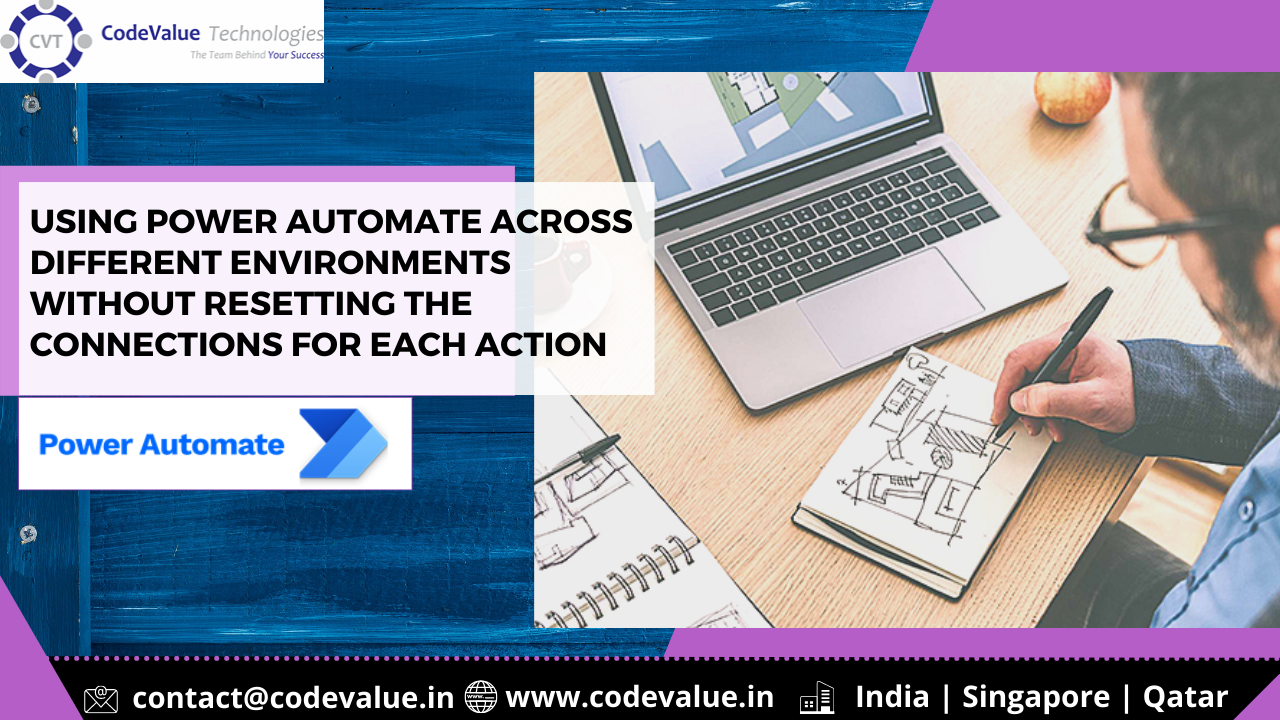In this blog, we will explore Microsoft’s new connection reference to help move the Power Automate to a different environment. While doing so, the main task is to update the connections setting. However, with the new public review, i.e., “Connection Reference,” it only needs to be done once for the primary connection. Additionally, the referenced connection is work-appropriated across the environment.
Problem Statement:
For deploying Multiple Power Automate options to a different environment, we can utilize the solution packaging and then use a solution to deploy it to the higher environment. This solves the problem of importing each Power Automate to the desired environments.
After deploying the Power Automate, the next hurdle is the connection we are using in these. If we are using something other than a CDS current environment connector, we need to reset every connection and re-authenticate across environments manually.
Connection References:
For the issue mentioned earlier, Microsoft just announced a “Connection References” feature, which is helpful while moving the Automate across environments, automating deployment pipelines are secure, updating flow definitions, and healthy Application Lifecycle Management.
A “Connection References” is a pointer for the connections, or we can say that it is a solution component that contains the information about the connectors.
Before we can dig deeper into the concept, this feature is currently only available for “Solution-Aware” Automates. This is because connection references depend on the solution framework given in the Common Data Service instance.
We will now understand how Automates and connections are associated with each other.
Each action in the Automate is currently bound to a specific connection utilized to “execute” that particular action. Therefore, for moving the Automate across the environment, a user needs to rebuild or reset the connection in every operation.
Connection reference now provides us with an abstract layer consuming the framework from CDS between resources as Automates and canvas app, and so on. It also provides us with the connection used for the communication of data operations. Using this, we create or set up the connection once in the environment, and then its reference is used for the other similar connections.
This approach’s benefit is that once the connection is set in each environment, it can be utilized across the whole environment. Additionally, if we ever need the connection to be swapped out, we only need to do it once, and all the references for this connection will be updated.
How to use Connection References:
If we create a new solution, the Connection references are automatically maintained for the solution aware Automate.
We can also create connection reference independently by clicking on the New button in the menu, as shown on the below image.

Limitations:
We can only utilize connection reference for the solution aware flows.
Old solutions need to be reimported for the utilization of connection reference. We need to export the unmanaged solution and reimport it in the same environment. This will automatically create the connection references, and then we can utilize it in the Automate.
The import of a Classic solution does not support this feature.
As it is in the preview, the limitation for reusing the connection reference is up to 16 flows only.
Conclusion
Connection Reference is a new concept in the preview. It is available for the solution- aware flows to provide healthy ALM for resources using connections within the solution framework. Hence, updating the values in the connection reference will automatically update the flows using these connection references.
I hope this blog has clarified your understanding of Power Automate and how you can use them without resetting the connections. If you have any questions or insights, feel free to leave a comment below!
To know more contact us at contact@codevalue.in and follow us @CodeValue Technologies Pvt Ltd

